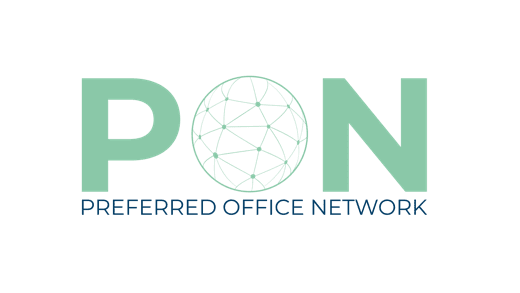
GWA Key Takeaways – How Flexible Workplaces Are Solving a People Problem
If one thing is for certain, it’s that we are currently experiencing a once-in-a-lifetime opportunity to shape radical new ways of living, including fixing what wasn’t working at work.
At a time when flexibility is at a premium and a heightened priority is put upon our life-work balance, rethinking how, when, and where we spend our working hours is paramount to enacting long-lasting change.
The Preferred team recently attended the Global Workspace Association’s annual Flex Forward conference, where we met with fellow thought leaders helping to define and design the future of the workplace.
Read on for several of our key takeaways from this powerful gathering of visionary professionals who shared innovative solutions for navigating our brave new world of work.
Why a Full Return to the Office Won’t Work
Many business leaders are perplexed by the proposition of how to get employees to return to the office because they’re referencing other areas of our lives that have since bounced back to a version of normal — think: travel, dining out, working out, brick-and-mortar retail.Those stuck in the past can’t quite grasp why workers haven’t happily marched back into their old offices, filling their empty cubicles and open office plans as if it were 2019.
What they might not realize is the importance of recognizing that in our approach to returning to work, we are solving a people problem, not a property problem. Rather than focusing on outmoded ideas about the traditional office — and all of the inherent baggage that comes with it — employers would most benefit from centering their RTO plans on the individual needs of their employees and what the entirety of their lives looks like today, which is, more often than not, much different than it was three years ago.
As we recently reported in our Q3 jobs report review, many individuals haven’t yet returned to the workforce because of an array of personal reasons that have materialized during the pandemic, including the unavailability of childcare, the uncertainty of caring for extended family, and the exorbitant cost of commuting.
The rise of remote work removed many of these barriers from our daily lives — temporarily. As pandemic restrictions eased in businesses and schools, we realized the collective price we all paid for not having had regular human contact for 2+ years. However, a full RTO plan doesn’t seem to provide the one-size-fits-all solution we’re searching for.
Enter the era of hybrid work arrangements, an increasingly attractive option for employers and employees alike. Hybrid work is a catchall phrase that can take on countless permutations, from supplementing a home office with smaller satellites to layering in flexible workspaces to factoring in work-from-home arrangements based on worker whereabouts and preferences. Choice being the optimal word here.
Granting employees a say in when and where they work cuts down on commute times and costs but still allows workers to meaningfully come together for meetings, brainstorming sessions, and communal experiences. And, a welcome growing trend amongst coworking centers is the inclusion of onsite childcare facilities, greatly assisting and improving the quality of life of working parents. This level of support and consideration for workers’ full lives is increasingly what drives employee attraction and retention for organizations today.
Creating a Place of Purpose
The inherent problem with most traditional office spaces — aside from the often undesirable locations, concerns about health and safety, and absence of life-affirming amenities? The lack of purpose — if your workers are going to make concessions to report to one dedicated place by your direction, it should be worth their time.
The reason most employees want to adopt hybrid work models is to have the chance to interact with managers, mentors, and colleagues in person once again. But that doesn’t mean clocking in to sit in a “dead space,” it means bringing people together in vibrant, lively environments where they can communicate, collaborate, and thrive.
It has been shown that hybrid work aids in our overall health and wellness. Consider a 2022 survey by Cisco of 28,000 full-time employees around the globe — 78% of respondents say remote and hybrid work improved their overall wellbeing. Furthermore, 82% say the ability to work from anywhere has made them happier, and 55% say that such work decreased their stress levels.
Coworking spaces are designed to support this autonomy and enhanced wellbeing — allowing for freedom and flexibility while joining professionals from different departments, job roles, companies, and industries in one communal space where they can live their best work lives.
Flexible Workplaces for All
With the level of disruption affecting our industries, the most successful companies will be the most agile.
The number of enterprises already utilizing flex workplaces is growing steadily as organizations recognize the need for workplaces that serve our human need for community and connection while also recognizing our desire for freedom and flexibility.
However, even for organizations open to the idea of establishing flexible workplaces as an embedded option for their employees, friction still exists in the discovery and execution phases. Coworking providers need to streamline these processes so that employers are more apt to understand the full range of their options.
Curated networks such as Preferred aid in this operation, offering one master contract for booking multiple spaces with flexible terms managed by one dedicated point of contact. This high-tech, high-touch combination removes barriers to implementing a flexible workplace option within your own company and permits the experimentation and evolving approaches that will mark the most relevant and resilient organizations of the future.
Better Together
Preferred is proud to be a part of the Global Workspace Association community — a collection of organizations dedicated to elevating the flexible workplace industry and the client experience. That’s what flexible workplaces are all about — connecting with other professionals to uplift our individual experiences and organizational initiatives.
It is Preferred’s position that offering flexible work is the #1 employee benefit for today’s organizations — we were honored to share this stance with the other game changers at this conference and look forward to continuing the conversation.
Enterprise clients who are curious about exploring the benefits of adding flexible workplaces to your company profile should reach out to learn more about how Preferred’s portfolio of locations along with its streamlined process can help bring your organization to the forefront of the future of work.



